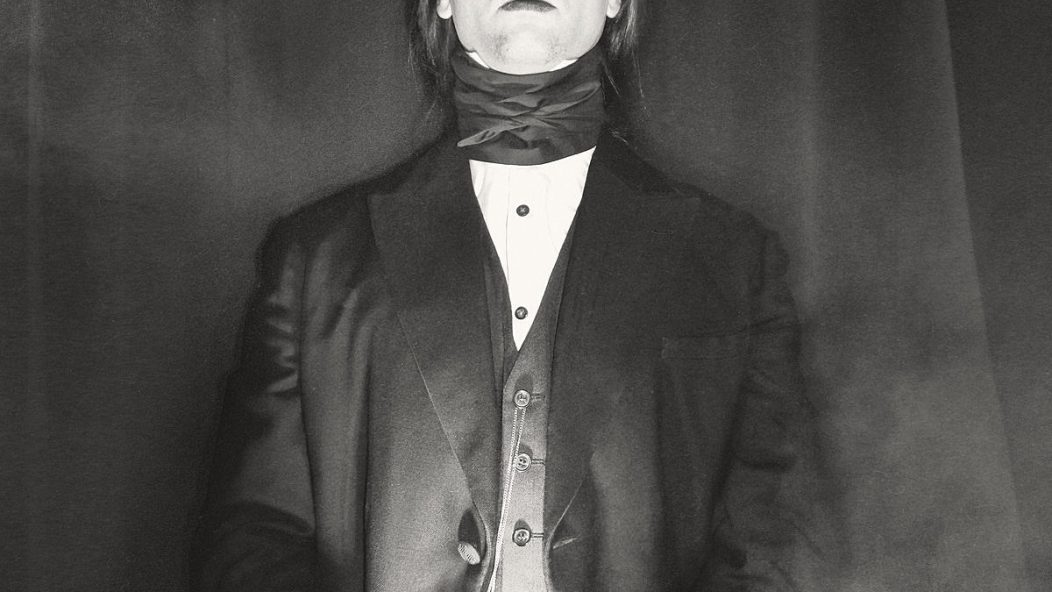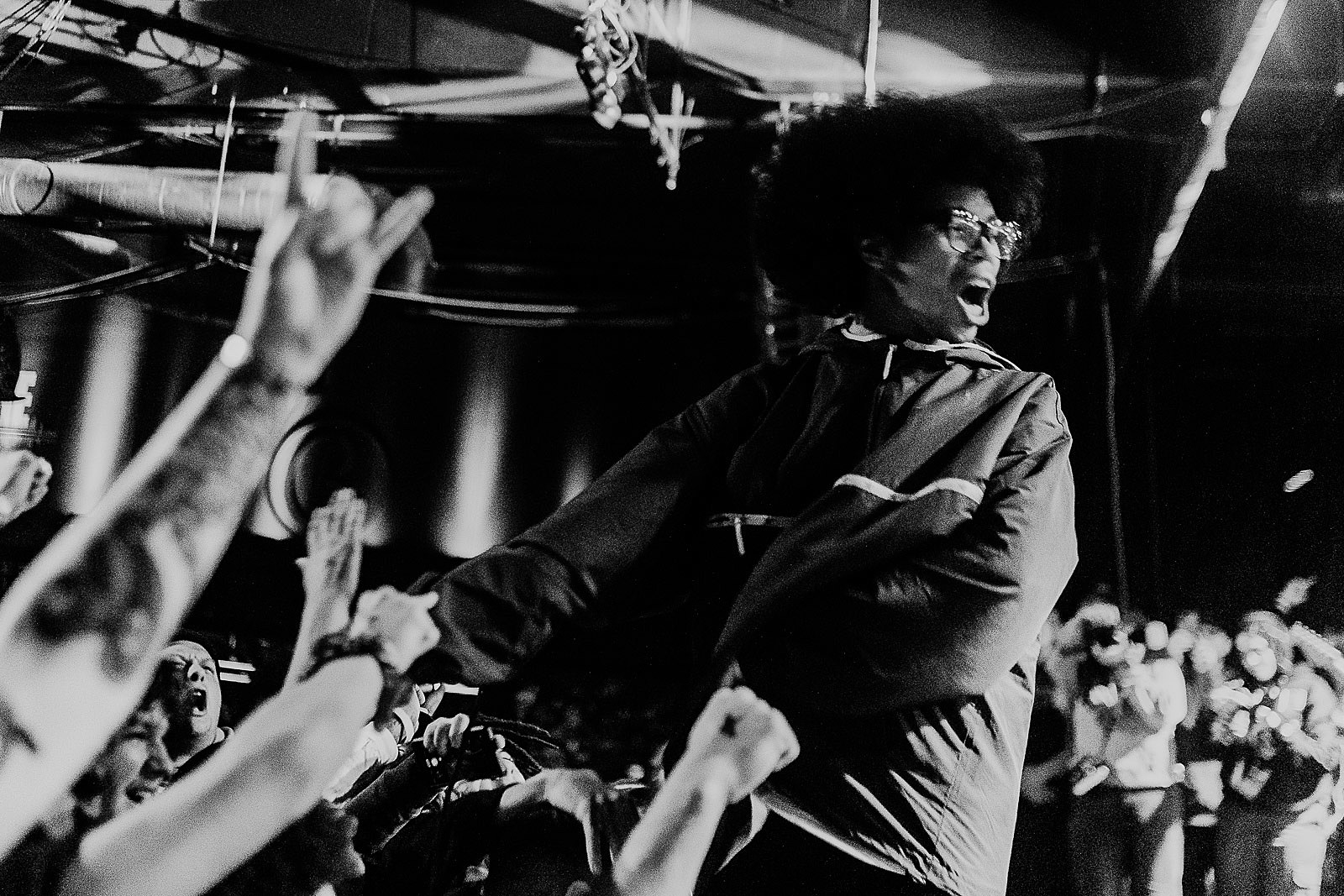
Les Chants du Hasard's "L'oubli" Finds Black Metal's Unplugged Essence (Early Track Stream + Interview)
Distorted guitars, pummeling drums, no bass frequencies. Black metal is pretty easily defined by its overall tone, but what if tone was superfluous? That is to say, maybe black metal is defined by something more, something… intentional. “Orchestral metal” (I might call them “black metal-inspired chamber music”) project Les Chants du Hasard take a strong stance in the world of intentional metal. Les Chants du Hasard take the ideals of what makes something metal and presents it in an entirely different fashion, maybe in a way we would hear metal if electricity would have never existed.
Utilizing solely chambered instruments (violin et al), woodwinds (flute et al) and the human voice, Les Chants du Hasard’s approach isn’t necessarily new, but the project presents “chambered metal” with new, stronger footing than their predecessors. Without distorted sound, upcoming album Livre Troisième offers a nuanced look into what exactly makes metal… metal, beyond the superficialities of post-production and armies of pedals. While still just as haunting as a black metal record, if not more, Livre Troisième‘s far more textured, harmonic approach relies entirely on the utilized instruments’ natural sounds and extended sound range to create possessed, enchanting music. Listen to an exclusive, pre-release stream of “L’oubli” and read an interview with composer and vocalist Hazard below.
…
…
What first inspired you to make black metal-inspired chamber music?
Thank you for the “black metal-inspired chamber music,” that’s a new label I’ll add to my already big collection!
Now, joke aside, I’ve had this idea for a long time. I’ve always been attracted by violent and dark music and I’m also classically trained. As a teenager, I began to write a symphony. Needless to say, It did not go very far and I kept that for later. In the meantime I did some metal bands but always felt frustrated with only using guitars and drums. I could not properly bring life to the ideas and I ended up putting the blame on my compositional skills. So I took five years of proper classical composition classes the old way, by writing canons, fugues and chorals with a pen and paper. Little by little, this idea of “black metal-inspired chamber music” came back but I was still not sure it would work. The real trigger was when I saw the opera “Elektra” from Strauss, the most violent piece of music I’ve seen. I was then convinced this approach was a good idea.
Why do you feel these two disparate styles of music work together in harmony?
They don’t seem to me so disparate. I think that if you’re interested in violent and/or dark music, the first musical styles that come to mind are metal and classical music. What I did is start from an opera perspective and steer it towards a darker atmosphere by using the singing techniques used in metal, as well as the digital treatments obviously not available in the 19th century.
Do you find genre fusion to be difficult, or did the Les Chants du Hasard sound come naturally to you?
If you look at non typical “metal” outfits, for instance Apocalyptica, Profanum, Van Canto, etc, their common point is that they all include a drummer. It’s because this instrument easily makes a song dynamic and catchy. My biggest problem at the beginning was to keep having movements in the songs without relying on drums. In order to do that, each instrument of the orchestra has to carry a part of this movement. So I had to change my way of writing music to really think each line in terms of the movement it brings to the overall music.
Other than that, the music came naturally. The project is still evolving with every new release and with Livre Troisième I’ve found a clear path, straying away from the initial idea of orchestra with black metal vocals. There are other type vocals, with two operatic soprano and the overall approach is more nuanced. I’m also much more comfortable writing for orchestra than I was at the beginning.
There are other artists like Elend before you who have made this type of fusion approach but still languished in the underground (obviously Les Chants du Hasard is not an Elend ripoff, but the approach is mildly similar). To what do you attribute Les Chants du Hasard’s notoriety given the more difficult and unique style?
Well, I think Elend is still more well-known than Les Chants du Hasard, they released five albums on some quite big labels with much more PR support than I’ve had.
Still, I believe there’s an audience for such music. A lot of metalheads claim to be interested in classical music. It appeals also to people in other styles, gothic, experimental, ambient. It seems to me Les Chants du Hasard has a style not labeled yet, which will eventually consolidate, just like it did with dungeon synth or synthwave for instance.
Much like the other Les Chants du Hasard albums, Livre Troisième was first composed on piano and then orchestrated. What is your orchestration approach like and how do you approach texture when dividing the condensed sound into various instruments?
This is a very open question. Some of the best composers wrote whole books about the art of orchestration (Rimski-Korsakov, Berlioz, Schoenberg). I already have a basic idea of how it will sound when doing the piano sketches, and then I think a lot about each part, the mood, the balance between low and high register and other parameters. I also study a lot of scores to learn new techniques and sometimes copy the orchestration. There’s no real defined process other than to stop when I know it’s good.
What inspired the very unique and haunting album cover?
The old movies from the twenties, especially Murnau’s “Nosferatu.”
…
Livre Troisième releases April 9th on the band’s Bandcamp.
…










